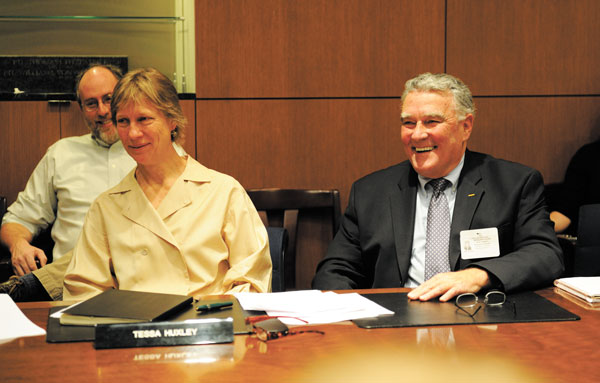From just a dream a couple of decades ago, the Hudson River Park is now 70 percent complete. But the park still faces steep obstacles.
Building the rest of the park will take $250 million. The cost of maintaining the growing park, which stretches 5 miles along the Lower West Side waterfront, continues to grow while government support is shrinking.
One of the park’s most pressing issues remains Pier 40. Under the Hudson River Park Act, the park is supposed to be financially self-sustaining. Pier 40, at W. Houston St., is intended to be one of the main, income-generating “commercial nodes.” It currently nets $5 million annually, nearly half the park’s annual operating budget.
However, this much-loved, mammoth, 14-acre former shipping pier continues to deteriorate. The Hudson River Park Trust has twice before tried to find a private group to repair and redevelop the pier. Each time, the Trust issued a request for proposals (R.F.P.) from developers. Each time, the resulting projects would have caused too great an impact on both the pier and the surrounding community, and were sunk by strident opposition from the community and from elected officials.
Highlighting Pier 40’s plight, Madelyn Wils, the organization’s new president, last week reported that 40 percent of the pier’s rooftop deck is in poor condition. The Trust authorized using $6 million from its reserve fund to repair part of the roof to preserve its parking revenue stream. Tapping into this $25 million reserve for this partial emergency fix is a smart use of these monies. However, the pier needs $110 million in repairs over all.
In an encouraging new development, three local youth sports groups — P3, Downtown United Soccer Club and Greenwich Village Little League — are paying for HR & A real estate and economic consulting firm to study Pier 40. HR & A has been tasked with two key goals: first, to make sure the pier’s heavily used athletic sports fields are preserved; and second, to find ways that the pier can be redeveloped to increase revenue for both repairing Pier 40 and maintaining the entire park, without adversely impacting the park and surrounding community.
According to Wils, HR & A’s study will be completed in about a month from now. Its findings will then be given to a new community task force that is studying the whole park, including Pier 40. The task force should finish its work by late spring, when it will offer its recommendations for Pier 40.
The task force is also looking at the park act itself, now 14 years old, which may need modifications. For example, should the state Legislature extend Pier 40’s lease from 30 years to 49 years? Perhaps — but only if there is a plan that the community and local leaders support.
Also, could residential or hotel uses, for example, work on the pier? These would surely be more palatable than a huge oceanarium or “Vegas on the Hudson” — and would likely involve far fewer car trips and people coming to the pier. Again, should the legislation be changed to allow this? It’s worth studying.
While many local residents, understandably, want to keep Pier 40 as is — to safeguard “the donut,” i.e. the courtyard sports field — and do nothing else, this isn’t realistic. With a rapidly decaying pier, maintaining the status quo is not an option.
While at the Economic Development Corporation, Wils helped forge a community consensus on development guidelines for the long-paralyzed Seward Park Urban Renewal Area.
We feel hopeful that Wils, the Trust and the task force are up to the test at Pier 40, but all parties must “think outside the box.” After reaching a consensus on SPURA, anything is possible.


















